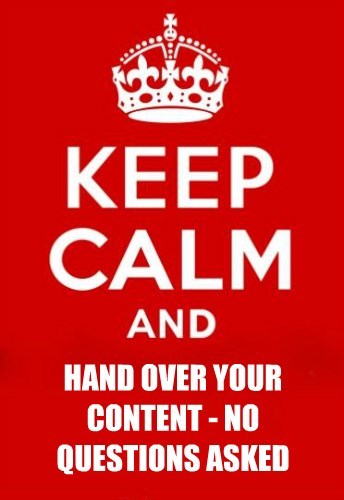Marketers spend an endless amount of time and energy refining their creative briefs, testing messaging, producing world-class PowerPoint presentations complemented by perfectly edited white papers and compelling landing pages, all to help educate customers and support the selling efforts of their sales teams. Before marketers congratulate themselves on accomplishing their content marketing mission, it’s important to close the loop with sales to better understand what’s actually resonating with customers, what content pieces are most effective and which ones cause more confusion than clarity on a sales call. After completing this due diligence, many marketers might be stunned to see how much of their hard work is either being drastically altered or completely ignored.
Some of your most effective content is made by (gasp) sales
SiriusDecisions states that the number one problem for sales effectiveness is an inability to convey their value proposition. Therefore, most B2B technology sales reps depend on quality content to communicate the value of their solutions with their customers. If sales reps are uncomfortable with the messaging, voice or layout of the material they are presenting, it’s highly likely they will adapt it to fit their style and selling situation. This is not always a bad thing when it comes to developing powerful selling tools such as slide presentations, email bullets or call scripts. In fact, a lot of the most effective content is born in the field as opposed to a marketing lab because it needs to stand up to direct customer scrutiny and sales approval. As a marketer, it’s critical to get your hands on this field generated content in order that you can refine your existing materials, share it across more sales teams and improve your overall content marketing strategy.
Content Amnesty – No questions asked
It’s not easy finding the home grown content your sales teams have been using because oftentimes even your most productive reps don’t necessarily want to share their best sales materials, or they don’t want to admit they might have changed any of your hard work. Or they are just too busy moving onto their next deal to bother focusing on what worked during their last customer engagement. An efficient way to uncover the best content from your sales team is to roll-out a field-wide content amnesty program. This approach is reminiscent of the way many municipalities rely on amnesty programs that allows local scofflaws the ability to come clean with no penalties and no questions asked about any unpaid traffic tickets, unregistered guns or delinquent taxes.
While your sales teams may not actually be be breaking the law, some of the things they do with content could be considered downright criminal. Here’s how to make your sales team an equal partner in your effort to share their best content with marketing and experience significant content marketing gains with your customers:
Calling all content
 Identify one month of the year on your marketing calendar as “content amnesty month” and during that special month alert your sales teams to send along any and all of their favorite sales content to a trusted point person on your marketing team. During this content collection period there will be no questions asked and no judgments made about the materials submitted which should include any and all content they consider to be most effective with their customers. Content collected should not be limited and might include sales materials such as: email copy, PowerPoint slides, infographics, TCO calculators, call scripts, event invitations, etc.
Identify one month of the year on your marketing calendar as “content amnesty month” and during that special month alert your sales teams to send along any and all of their favorite sales content to a trusted point person on your marketing team. During this content collection period there will be no questions asked and no judgments made about the materials submitted which should include any and all content they consider to be most effective with their customers. Content collected should not be limited and might include sales materials such as: email copy, PowerPoint slides, infographics, TCO calculators, call scripts, event invitations, etc.
Sales focus groups
Once you have collected a wide range of sales materials, assemble a small team of sales reps to conduct an informal focus group to review the content and get direct input (buy them lunch for the focus group so they show up). Use the focus group to better understand what works best about their submitted content, what the selling situations are for each item and how they would advise their sales counterparts to use the content appropriately.
Spread the word
Partner with sales to narrow down the most relevant content and work together in your promotion of this newly discovered field-tested content. Then distribute this field generated content through all your available internal channels: sales meetings, sales newsletters, intranet, posting on the walls of the high traffic areas in your sales office (we have a sales and marketing board next to our kitchen area – hard to miss). It’s equally important to highlight the source of the content and recognize the sales and marketing partnership to get better utility for the new materials and to gain more credibility across the organization. It doesn’t hurt to reward the reps who provide the best or most new content with some type of special recognition and thanks (food, drinks or gift cards are always welcome). The byproduct of this partnership will not only be better content but tighter sales and marketing alignment for future initiatives related to your ongoing content development.
Put content amnesty to work in your organization
By employing a content amnesty program, marketers will uncover new and practical content ideas already being used by their sales teams in the field. Companies should recognize that producing effective customer-facing content is no longer exclusive to their marketing organization. Sales is the secret weapon in your effort to build proven and more powerful content marketing strategies that hit the mark with more customers.
Is content amnesty something you think would work for your marketing and sales organizations? Let us know in the comments section or feel free to connect with me on Twitter or LinkedIn.




